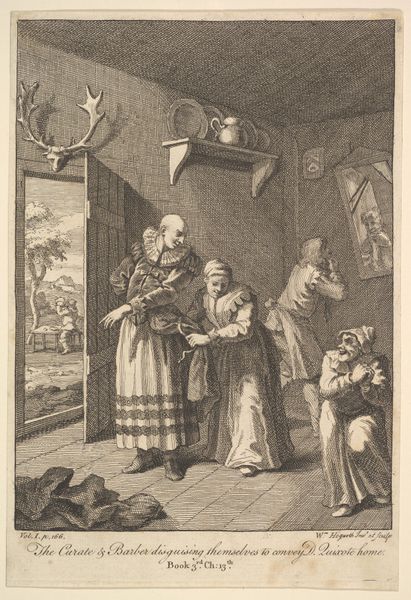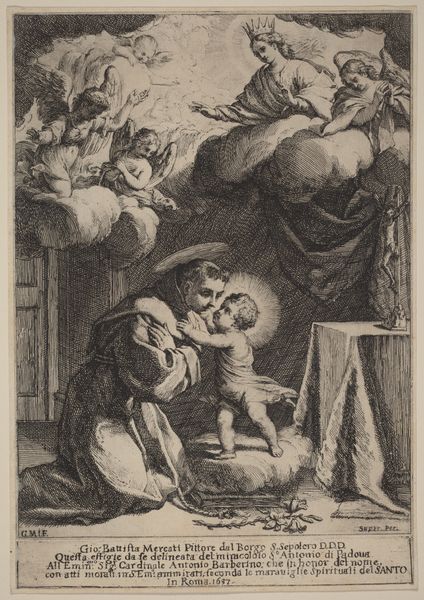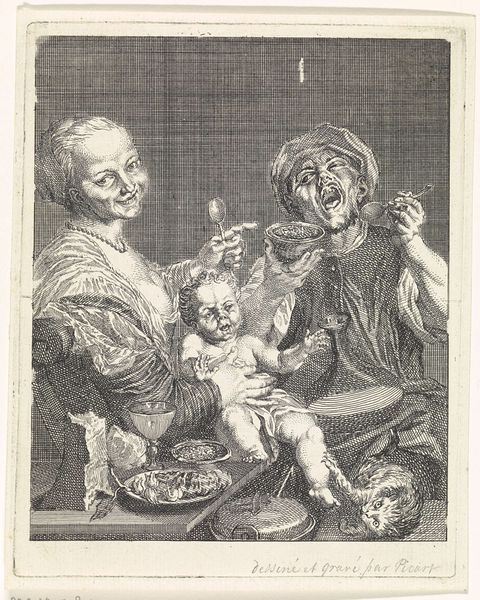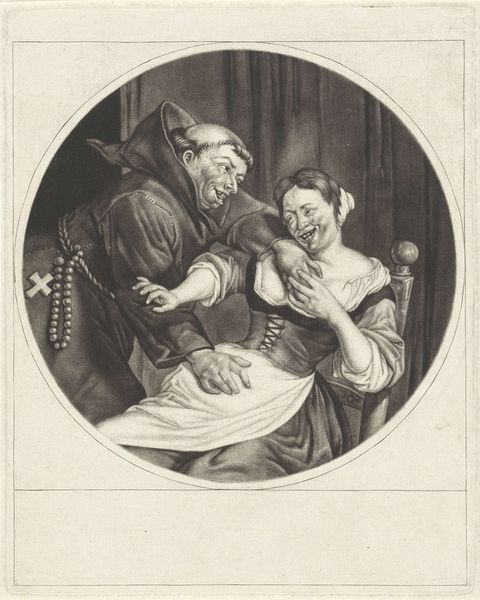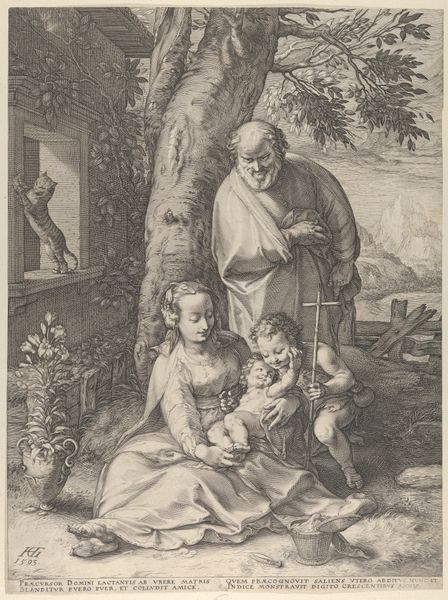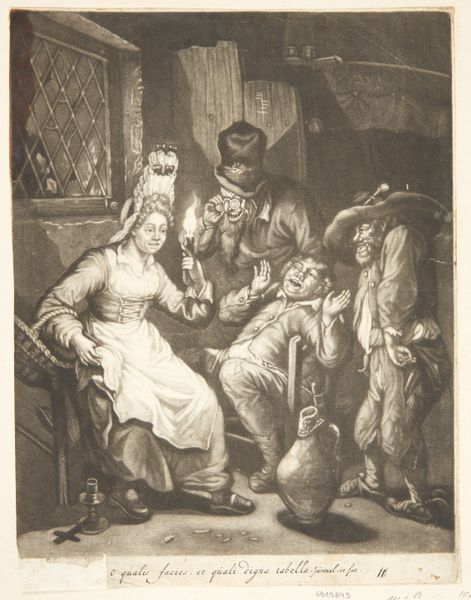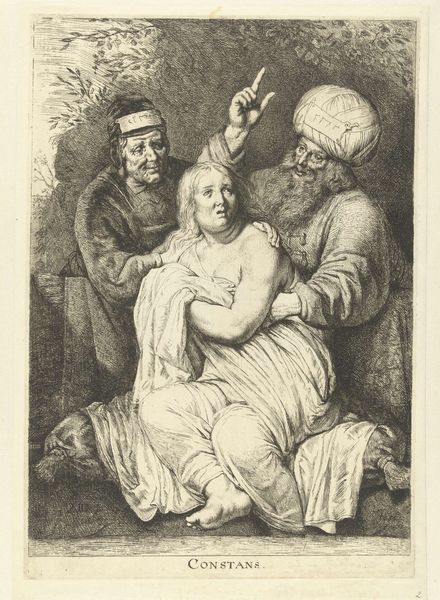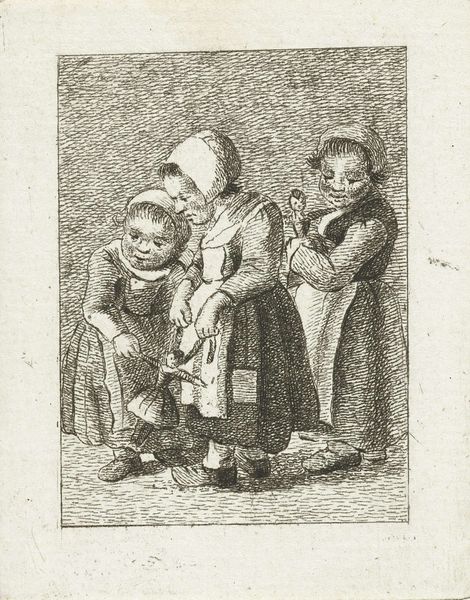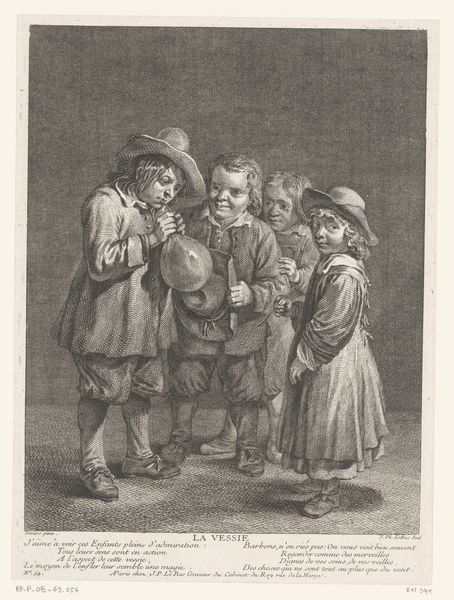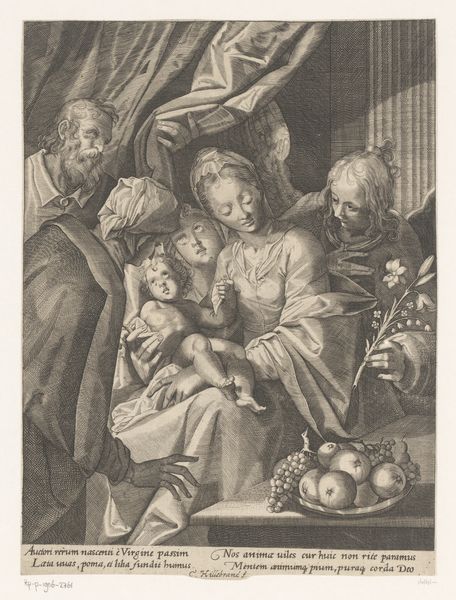
print, engraving
#
portrait
#
narrative-art
#
dutch-golden-age
# print
#
figuration
#
portrait drawing
#
genre-painting
#
engraving
Dimensions: height 216 mm, width 154 mm
Copyright: Rijks Museum: Open Domain
Editor: We’re looking at Cornelis Dusart's "Juni (de pinksterblom)", a print from between 1679 and 1704. The composition is dominated by three figures, but the lines feel…sketchy. What strikes you about this work? Curator: I'm immediately drawn to the engraving's rigorous deployment of line and value to delineate form and space. Note the distinct graphic quality achieved through the considered application of hatching and cross-hatching. Editor: So, less about the ‘story’ happening between these characters? Curator: The narrative, while present, serves primarily as a vehicle for the deployment of compositional and textural contrasts. Observe, for instance, the relationship between the detailed rendering of the figures and the relative austerity of the background. How do you see the dynamic created by the balance of light and shadow affecting your reading of depth within this composition? Editor: The sharp contrast brings the figures forward and flattens the space, but it also highlights the individual textures – the clothing, the foliage, the skin. It is interesting that their faces and bodies seem slightly asymmetrical; there is distortion in their features. Curator: Precisely. Dusart's adept manipulation of form calls attention to the artifice inherent in representation itself. This manipulation forces the viewer to actively negotiate between the illusionistic depiction of figures and an awareness of the print as a constructed object. The semiotic potential of the image emerges from that very tension. Editor: I see now how looking at the work this way – focusing on form, composition, and material – really unlocks a deeper understanding beyond the initial subject matter. Curator: Indeed. Formal analysis provides a rigorous framework through which to understand the mechanisms of meaning production within the visual arts.
Comments
No comments
Be the first to comment and join the conversation on the ultimate creative platform.
